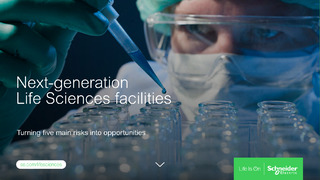Life Sciences companies face a major challenge to meet increasing demand and ensure the affordability and accessibility of medicines for all.
• Fast growing aging populations and longer life expectancies with improved mortality rates. Per UN study, 65+ age group to rise from 9% to 16% globally by 2050, and 80+ age group is projected to triple;
• Rising urbanization and increasing number of working class with sedentary lifestyles;
• Estimated 2 billion people (around 30% globally) have no access to essential medicines.
It is imperative for drug manufacturers to accelerate the adoption of innovative technologies to address the situation and bring transformational changes to the way the lifecycle of medicinal products are managed. Facilities play a critical role in creating an environment where medicines are manufactured to a consistent quality with minimal cost.
The performance of facilities is a critical factor in maintaining business continuity and production uptime. According to the FDA, failures in product or facility quality are the leading cause of disruption to manufacturing – resulting in 66% of all drug shortages.
To better understand the risks to production and the environment, facility management requires a pro-active approach when developing processes to capture and analyze data. Let’s examine the five key risk factors for Life Sciences facilities and transform them into opportunities for business.

